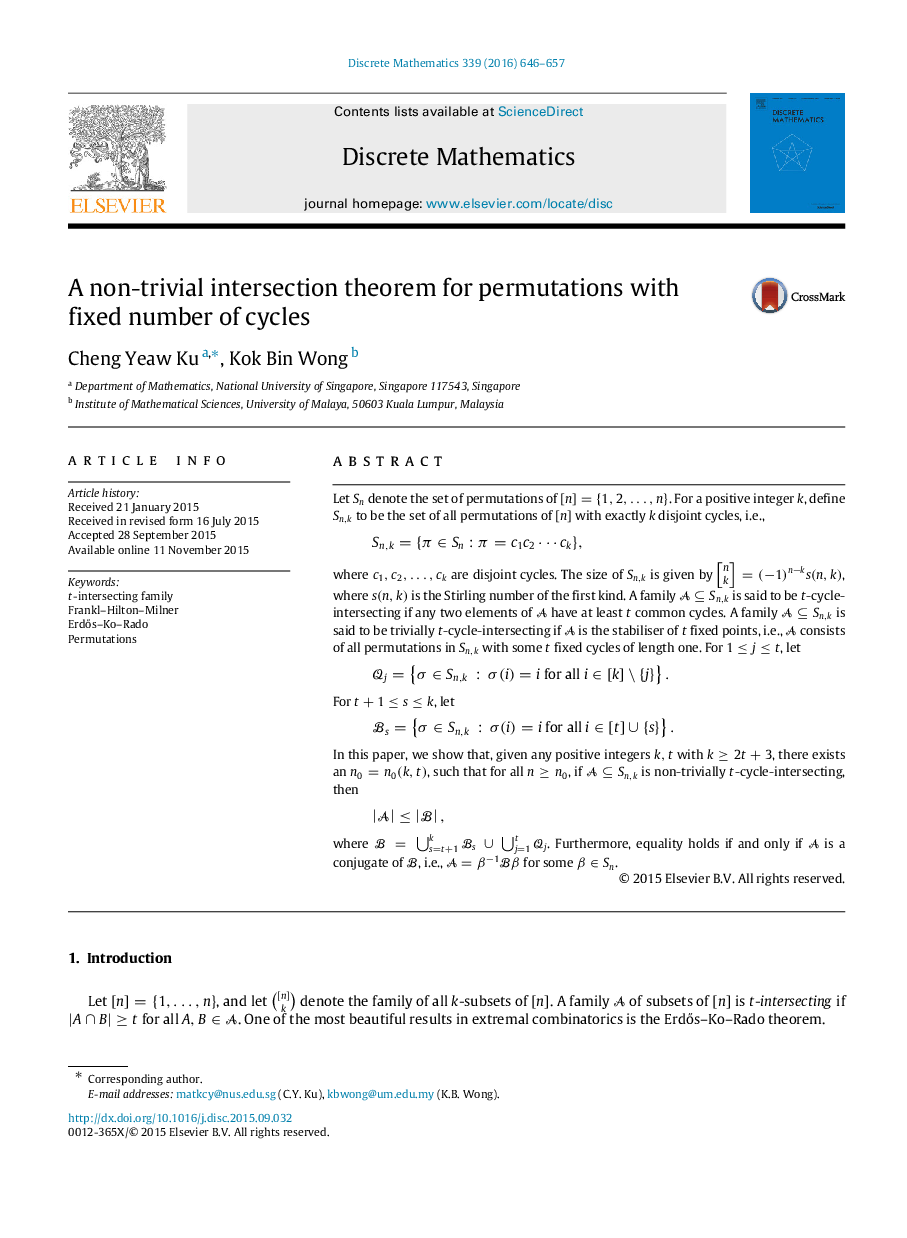| Article ID | Journal | Published Year | Pages | File Type |
|---|---|---|---|---|
| 4646662 | Discrete Mathematics | 2016 | 12 Pages |
Let SnSn denote the set of permutations of [n]={1,2,…,n}[n]={1,2,…,n}. For a positive integer kk, define Sn,kSn,k to be the set of all permutations of [n][n] with exactly kk disjoint cycles, i.e., Sn,k={π∈Sn:π=c1c2⋯ck},Sn,k={π∈Sn:π=c1c2⋯ck}, where c1,c2,…,ckc1,c2,…,ck are disjoint cycles. The size of Sn,kSn,k is given by [nk]=(−1)n−ks(n,k), where s(n,k)s(n,k) is the Stirling number of the first kind. A family A⊆Sn,kA⊆Sn,k is said to be tt-cycle-intersecting if any two elements of AA have at least tt common cycles. A family A⊆Sn,kA⊆Sn,k is said to be trivially tt-cycle-intersecting if AA is the stabiliser of tt fixed points, i.e., AA consists of all permutations in Sn,kSn,k with some tt fixed cycles of length one. For 1≤j≤t1≤j≤t, let Qj={σ∈Sn,k:σ(i)=ifor alli∈[k]∖{j}}. For t+1≤s≤kt+1≤s≤k, let Bs={σ∈Sn,k:σ(i)=ifor alli∈[t]∪{s}}. In this paper, we show that, given any positive integers k,tk,t with k≥2t+3k≥2t+3, there exists an n0=n0(k,t)n0=n0(k,t), such that for all n≥n0n≥n0, if A⊆Sn,kA⊆Sn,k is non-trivially tt-cycle-intersecting, then |A|≤|B|,|A|≤|B|, where B=⋃s=t+1kBs∪⋃j=1tQj. Furthermore, equality holds if and only if AA is a conjugate of BB, i.e., A=β−1BβA=β−1Bβ for some β∈Snβ∈Sn.
